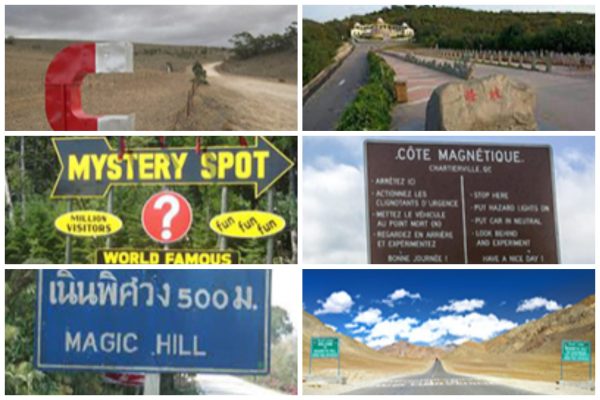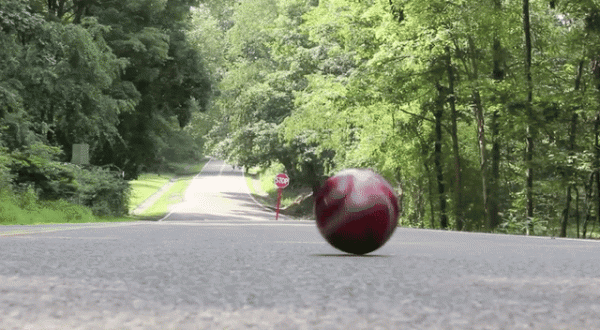Image source: Yahoo! News
Gravity hills, or magnetic hills, are places that look like an upward hill, but they actually slope down a little. When you leave a car in neutral at the base of one of these hills, it may roll uphill — seemingly defying gravity. In reality, it’s a powerful optical illusion due to the surrounding landscape.
These hills aren’t haunted, magnetic, or supernatural. But they are genuinely confusing.
How do gravity hills work?
Here’s what’s really happening:
-
No visible horizon: Most gravity hills are surrounded by trees, hills, or cliffs. With no natural horizon to anchor our sense of level, our visual system gets tricked.
-
Tilted reference points: Trees, signs, and road edges may also be leaning slightly — further confusing our perception.
-
Slight slopes: The slope of the road is actually downhill, but our brain interprets it as uphill because of the misleading surroundings.
Most gravity hills are in forests or areas with high cliffs where the road rises and descends. You can see clearly that the road is not level. But without a reliable reference point such as the horizon, it is difficult for our brains to judge the slopes.
This is a type of cognitive illusion, meaning your brain, not your eyes, is misinterpreting the information.
Are Gravity Hills Dangerous?
They can be. When drivers are expecting their car to stay still. On some gravity hills, if you leave your car in neutral, it may begin rolling in what looks like the “wrong” direction.
There are urban legends about school buses being hit by trains on every gravity hill near a railroad crossing in the USA (Pennsylvania, Oklahoma, Texas, California, and more). Do a Google Search for ‘gravity hill school bus’ and you will find dozens of these stories. None of these stories could ever be verified, though. And all the strangeness can be explained by physics and psychology.
Famous gravity hills around the world
You can find gravity hills in almost every country — and many have become quirky roadside attractions to travelers.
-
Magnetic Hill, Ladakh (India): A popular tourist stop in the Himalayas, where vehicles seem to defy gravity on a stretch of road.
-
Spook Hill, Florida (USA): Drivers are encouraged to stop at a white line, put their car in neutral, and watch it roll “uphill.”
-
Strange Slope, Shenyang (China): This hill has been puzzling scientists and tourists alike since the 1990s.
-
Confusion Hill, California (USA): A whole theme park built around gravity-defying optical illusions.

Can I visit a gravity hill?
Yes! Just Google “gravity hill near me” and you might be surprised to find one close by. There’s no danger in visiting one, but always stay alert and avoid standing behind vehicles. Some tourists use levels or GPS elevation data to test the actual slope — and the results are always fun to see.
Gravity hills are powerful examples of how our brains rely on visual cues to understand the world — and how easily those cues can mislead us. They’re not haunted, not magnetic, and not magic — just a beautiful glitch in human perception.


